P H O T O I N S I G H T S
September 2023
Drama of Black Backgrounds
Elevated vantage points
Photography quiz
Photo tours

Ask Jim Student Showcase
Back issues
On the cover: Lemon hourglass frog from Costa Rica photographed during Jim’s semi-annual Frog and Reptile workshop held in Kansas City. This page: Skadi, the goddess of winter in Norse mythology, and her arctic wolf created from AI -- artificial intelligence.

When I think about how far photography has come from its invention, it’s hard to get my mind around it. Imagine what photographer Edward Curtis had to do in photographing American indians in the very early 1900’s. His first camera was a 14 x17 inch view camera he bought in 1890. Film didn’t exist then. In order to make image recording material, he had to apply a silver nitrate solution to glass plates, in a darkroom, and then load his camera -- also in the dark -- to expose one plate at a time. The speed of the image recording material was approximately 6 ISO, and that meant his subjects had to use a head rest at the back of their head to prevent movement during long exposures.
If he used flash, it was a small gunpowder explosion! With the shutter open, an assistant would ignite a small pile of the black powder on a tray, and that reduced the exposure time.
When he traveled the West in search of tribal villages, he did so in a horse-drawn covered wagon. Over hundreds of miles of rough, rocky roads his camera, glass plates and photographic chemicals had to be securely fastened. If something broke, he was out of luck. Curtis developed his negatives at night, and as they dried the problem with dust becoming embedded in the chemical layer containing the image had to be enormous. This was dedication to photography in the extreme.
Edward Curtis died in 1952, so he lived to see the invention of film, and then color film, and modes of transportation more efficient than covered wagons. You should search for Curtis’ photography online and enjoy his historic images that took so much work and dedication to take.
Jim Zuckerman photos@jimzuckerman.com www.jimzuckerman.com
The Drama of Black Backgrounds
You can never go wrong with a black background. It is never distracting, it complements pretty much any subject, it immediately cleans up a messy background and it’s always easy to achieve.
In addition, solid black backgrounds are stark, dramatic, elegant, and they force all the attention on the subject. Whenever you are unsure about which kind of background to use for any
kind of subect -- a portrait, macro shot, a still life, an animal under controlled conditions, and more -- black will always look good.
While you may want a black background, it may not always be readily available. Take, for example, the Venetian costumed models below. I took this picture on one of the streets in Venice during the day, and behind the two women were shops and crowds of people. A


black background was impossible to achieve at the time.
There are three ways to create a black background behind a subject:

1. If you have the time and the ability, place or hang a piece of black fabric in back of the subject. That’s what I did when photographing the Hamar tribal woman from Ethiopia, right. Two people held up the velvet cloth behind her, and, because this shot was set up in the village, all the distracting elements behind the woman disappeared instantly -- the huts, other villagers, tree trunks, and cooking fires. The black fabric turned an otherwise less-than-ideal portrait into a strong and compelling image.
Regarding the black fabric, I prefer velvet or vel-

The Birds of Costa Rica

May 13 - 23, 2024

veteen because this kind of material absorbs light better than anything else. What you don’t want to see in the background is the texture or the contours of the material. It should be as black as ink. Velvet, especially, is ideal for this. When I know I’ll be using black as a background, like when I travel to Africa and I want particularly dramatic portraits, I carry a 2-yard piece of velvet with me. If I focus on macro photography and want to simplify the background -- in a garden or a forest floor -- a smaller piece works best. The columbine flower, above, was done by setting up a one yard piece of black velvet behind the flower.
2. You can create a black background using Photoshop. The procedure is to select the subject using any of the selection tools such as the magic wand tool, the quick selection tool, the lasso tool, the pen tool, etc., feather the edge one pixel (Select > modify > feather), and then inverse

the selection using Select > inverse. Now the entire background is selected. At this point, simply fill the background with black using Edit > fill. That’s what I did with the Venetian carnival shot on page 4 (plus I added a small reflection at the bottom of the image using the plugin Flood). I used the same technique in the snake picture on page 5 in which I selected the background and filled it with black.
This approach works for many subjects, but not all. For the lions on page 6, due to the fine detail in their manes, it would have been impossible to select them with believable accuracy. I had to do something entirely different.
3. The intensity of light diminishes as it travels outward from the light source, and it does so according to the Inverse Square Law. This law states that light is diminished by four times as the distance is doubled. This is not what you’d
expect. It would make sense that as a light source doubles its distance from the subject, say from 10 to 20 feet, the power of the light would be cut in half. In fact, however, the intensity of the light is reduced by four times.
In the context of creating black backgrounds, this works to a photographer’s advantage. When you use flash and the background is several feet away, the subject exposes correctly but the light falloff is dramatic. With enough distance between the subject and the background, the latter goes completely black.

That’s exactly what happened behind the lions. Though taken at night, I could see grass and bushes in the background thanks to a large flashlight my driver had used. With flash, the contrast between the brightly lit cats and the background caused the latter to go black. That’s also what happened behind the long-
tongued bat, above. There was a dense jungle in the background, but because the vegetation was about 20 feet behind the bat, it received such diminished illumination that it went black.
In this way, you can dramatize all kinds of subjects, even those with hair, feathers, or whiskers that otherwise would be virtually impossible to select perfectly. §

Elevated Vantage Points
Aerial points of view are often spectacular. I’m always looking for them. When I travel to another city, a national park or nature preserve, I research online for dramatic photographic views.
Cities and villages
Large cities, especially, offer tremendous opportunities to take amazing pictures. Helicopters are very expensive to charter, and most cities won’t let you fly drones over populated areas and around tall buildings. But with creative thinking, you can locate great places that are

open to the public and offer wonderful photographic opportunities.
The places I first seek out are rooftop restaurants and bars. In most large cities in the world, these are plentiful. I simply do a search on Google, “Rooftop restaurants with a view,” then I’ll go to the website of each establishment and look at the pictures. If the view is worthy of note, there will most likely be photos of it online because this is their big attraction. Many times you’ll have to shoot through glass from the interior of the restaurant or bar, but other times you can enjoy dinner or a drink
from an outdoor terrace that is completely open. I took the photo of Las Vegas, above, from an unobstructed view in a semi-outdoor bar in The Hotel. The image above right of the Chicago River was photographed from a bar on the 22nd floor of the London House. It is completely open to the hustle and bustle below and offers one of the best photographic

views in the entire city.

Many skyscrappers have observation platorms. They charge admission as it’s another source of income, but usually it’s well worth the price of admission because the views are often unparalleled. The breathtaking view of Shanghai on the previous page is what you see

Ethiopia Photo Tour

Jan, 21 - Feb. 3, 2025

from the 100th floor observation deck in the ‘Bottle Opener’ building. You have to shoot through glass, and the glass is angled somewhat, but the pictures are incredible. When shooting at twilight or after dark, you must eliminate reflections in the glass from lights inside the room. To do that, put the lens of the camera up against the window and wrap any kind of fabric around the lens, such as a scarf. That will completely block unwanted reflections.
I took the picture of the Eiffel Tower on page 11 from the observtion deck in the Montparnasse Tower in Paris. There are two levels, one of them allows you to shoot through a clear opening bypassing the glass.
Sometimes you have to think outside the box. For example, to take a good picture of the Los

Angeles skyline from a distance so I could include most of the major highrises, I was looking for an elevated position from which to shoot above the homes and businesses that blocked the view from the ground. I noticed a U-haul storage facility about 20 stories high and located about a mile west of downtown. I talked my way up to the top to take the picture below during the blue hour.
Hotel rooms situated in prime locations are another great resource. When I plan a photography tour, if it’s feasible to stay in a hotel with a dynamic view of the city, especially a view of a famous icon in the city, I’ll book a block of rooms for my group. Such was the case with the stunning Blue Mosque in Istanbul at thej bottom of the next page. I took this shot at sunrise right from my hotel room. It was an older hotel, so I could open the window and
shoot without having to deal with glass.
Some hotels have rooftop swimming pools. If you stay at the property, you have total access to the 360-degree views. This means you can choose the best time of day for your photography. In my opinion, cities look best at twilight and after dark. I took the picture of Singapore, right, from the pool deck on the 57th floor of the Marina Bay Sands Hotel. It’s an expensive hotel to stay in, but in my opinion the views are worth it.

Small towns and villages usually don’t have highrise architecture, but sometimes, especially throughout Europe, they have medieval cathedrals in which you can climb up to an observation platform near the belltower to gain a commanding view of the surroundings. In addition, there may be hills surrounding the town that are accessible by road or by a

walking trail. I’ve taken many excellent shots this way. At the top of the next page, I captured the lovely village of Maria Alm in Austria from the slope of a hill. I simply walked through the flowers until I liked the elevated composition that gave me an overall scene of the village and the distant mountains. This was impossible to take from the streets below.
Similarly, in the town of Alesund, Norway shown at right, there is a town park which
includes the “Town Mountain”. 418 steps takes you to the Aksla Viewpoint, a stunning view of the entire town and harbor. It is spectacular at twilgiht and, in winter under a blanket of snow, it’s even more beautiful.


Research is the key to finding these elevated vantage points. With Google earth, and with so many amateur photographers posting
their pictures on social media and various websites, it’s not difficult to find pictures taken from pretty much anywhere now.
Not all high perspectives yield great pictures, of course. For example, the Aerial Tramway in Palm Springs, California affords an expansive view of the desert far below, but the flat, featureless desert is devoid of graphic design, and it’s just not photogenic.
What you should be looking for in your research are scenes with strong graphic elements that have attractive lines. A nice arrangement of tall buildings, an artistically formed shoreline, visually pleasing contours in the land, patterns in autumn colors, etc.
Landscapes
Gaining elevated perspectives when shooting nature is a great way to instantly capture striking compositions. If you’re lucky,
these perspectives can be accessed by road; sometimes a parking lot in a national park is situated where you’ve got incredible vistas. Bryce Canyon in Utah, right, provides many places like this where you step out of your car and are immediately overwhelmed by what you see.

The picture at lower right is another amazing elevated vantage that you can drive to and, in the process, expend virtually no effort. This is the Kalau Lookout on the island of Kauai, Hawaii.

The picture below was taken from the Owl’s Head Overlook in Vermont. It’s a 10 minute uphill climb to this rock outcropping from the parking lot.

Searching through the variouis social media platforms will enable you to find so many great views that you could spend your entire life in pursuit of them. I primarily use Pinterest, Flickr, Instagram, Facebook, 500pix, and YouPic. In addition, I’ll simply do a Google search with key words like “landscape vistas” and “landscapes from mountain tops.” Not all people who upload pictures reveal where they
were taken, but many do. With persistence and research, you can find the precise locations.
If you backpack, then you have access to endless numbers of great views. Using detailed topo-
graphical maps, the Internet, and websites like AllTrails.com (in which other backpackers share experiences and pictures of their favorite hikes), you will be able to find the most amazing elevated perspectives to photograph. With apps like Photopills, you can see how sunrise or sunset lighting illuminates the land. §
AI ONLINE WORKSHOP
Learn how to produce stunning images with Artificial Intelligence


Starts October 14, 2023

Photography Quiz
1. It is possible to handhold a 5- or 7-frame HDR sequence of images and get tack sharp results.
a. True
b. False
2. With Rembrandt lighting, the nose shadow must cross the center of the chin.
a. True
b. False
3. The diameter of an f/8 lens aperture is the same measurement for 35mm digital cameras and medium format digital cameras.
a. True
b. False
4. Exposure meters are programmed to understand:
a. Middle gray
b. Middle blue
c. Middle red
d. All of the above
e. None of the above
5. Focus stacking addresses the problem of:
a. Not enough contrast in a picture
b. Not enough depth of field in the scene
c. Not enough color saturation in the subject
d. Too much noise in the image
6. When a photographer is shooting with a super telephoto, like a 600mm f/4, you can deduce:
a. The person must be a really good photographer
b. The person has more money than sense
c. The person just wants to show off
d. All of the above
e. None of the above
7. Shutter priority is a good choice for photographing waterfalls.
a. True
b. False
8. If you accidentally delete images from a flash card, they can be recovered with special software if no new photos have been recorded on the card.
a. True
b. False
9. As you move back from a subject, and all other factors remain the same, depth of field:
a. Decreases
b. Increases
c. Stays the same
d. None of the above
10. Your pictures may not be sharp because:
a. The autofocus mechanism was fooled by non-subject elements
b. The center column of your tripod was raised too high
c. The shutter speed was too slow for moving subjects
d. All of the above
e. None of the above
UPCOMING PHOTO WORKSHOPS
Winter Wildlife Workshop
Photograph beautiful North American mammals plus a snow leopard in natural environments. Mountain lions, red foxes, arctic foxes, bobcats, lynx, wolves and more are in their full winter coats. This is a very special workshop.

January 6- 10, 2024
Snowy Owl Workshop

Close up encounters with these beautiful birds of the North. Capture bird in flight shots in a snowy environment. Jim guides you in camera settings and technique to take the best pictures possible.
January 11 - 15, 2024
Carnival in Venice
Photograph amazing costumes in a Medieval environment, inside a 16th century palace and in an iconic gondola. The photography as well as the experience is amazing.
February 4 - 10, 2024

Click on any ebook to see inside











WINTER WILDLIFE WORKSHOP

January 6 -10, 2024

What’s wrong with this picture?
There are two things I consider less than ideal in this image. First, the sky is white. Sometimes a white sky works as a backdrop, such as when shooting winter landscapes, but here it’s not very attractive.
Second, although I took this shot in early October when autumn foliage should have been colorful, these trees hadn’t really turned yet, and from the looks of things, they may have never achieved the color I wanted.
The comparison picture on the next page shows that I addressed these two issues. Replacing the sky was easy; I used the Edit > Sky replacement command in Photoshop and chose one of my own skies (the first thing I did in sky replacement was discard the stock skies Adobe included in the software because I want to only use my own sky images).

To introduce shades of red into the leaves of the foreground tree, I used the Photoshop pull down menu command, Image > adjustments > hue/saturation. When this dialog box opens, there is a submenu within that’s labeled, ‘Master’. You can pull this down to show a list of colors, and from here you can manipulate the individual colors. First I selected yellow and moved the hue slider until the yellow tones transformed into red. Then I did the same thing with green until I liked the result.
In order to make the immediate foreground as sharp as the background, I used the technique of focus stacking. I did it manually because at this time, I didn’t have the automatic focus stacking ability in my Canon. I took 12 shots as I focused from the most distant point to the foreground, and then in Photoshop I assembled these 12 frames to create a composite that exhibited complete depth of field throughout the image. §

SHORT AND SWEET
1. Images of wildlife don’t always have to show the entire animal in a perfect pose. Predators like this jaguar in Brazil hunt in ‘stealth mode’, to to speak. They move quietly, largely hidden in thick jungle vegetation as they search for prey. That’s what I wanted to show here.

2. Unexpected angles can make unique and intriguing images. These mushrooms were growing in my front lawn, and because they were too close to the ground to put my Canon R5 beneath them, I used an iPhone on wide angle mode. I then replaced the sky in Photoshop.

3. The original sky in this image was white and I didn’t like it. So, replaced it with clouds, but I had to make the clouds blurred (Filter > blur > gaussian blur) because the trees behind the camera were blurred. It would be impossible for the camel to be sharp, the trees blurred and then the clouds sharp.

4. Usually, midday direct sunlight is to be avoided because it’s too harsh. Shadows go black and highlights are often overexposed. This situation in Namibia was an exception. The bright sun made the colors pop, and the contrast works. It only works, though, because the sun was at my back. §

Coast of France and the Loire Valley

April 4 - 13, 2024

ASK JIM
Every month, Jim answers a question from his online students, from people who participate in his tours and workshops, or from subscribers to this magazine. If you have a question you’d like Jim to answer, please drop him a note at photos@jimzuckerman.com.
Q: Jim . . . I’m debating between a Canon 24-70mm lens and a 24-105mm. The 24-70mm is one f/stop faster, but the 24-105mm has a greater zoom range. What advice can you give me regarding which one to buy?
Margaret Petersen, Phoenix, Arizona
A: I am not a fan of the 24-70mm focal length range. For me, it is too narrow and not versatile enough. If you only shoot weddings or family portraits, it’s fine. But I prefer the 24-105mm because of the longer zoom range. Sure, f/2.8 is nice to have as opposed to f/4, but today an extra f/stop isn’t nearly as important as it was years ago. When we all shot film, most photographers only went above 100 ISO if they had no choice. Now, 3200 ISO is no big deal. Therefore, don’t worry about the lens aperture. F/4 is fine, and you’ll enjoy a much more versatile lens in the 24-105mm range.

Partial List of Photography Tours 2024
WINTER WILDLIFE

Jan 2024
SNOWY OWLS

Jan 2024
CARNIVAL in VENICE

Feb. 2024
ABANDONED in GEORGIA

March 2024
HOLLAND & BELGIUM

Apr/May 2024
WHITE HORSES, FRANCE

May 2024
COSTA RICA BIRDS

May 2024
LAVENDER FIELDS, FRANCE

Jul 2024
INDONESIA

Jul/Aug 2024
ICELAND DRONE TOUR
Aug/Sept 2024
PATAGONIA


Oct 2024
LOUISIANA SWAMPS

Oct 2024
For a complete list of all the photo tours/workshops Jim conducts, go to his website: www.jimzuckerman.com.
Online Course in AI

Starts October 14, 2023

Produce brilliant images right out of the starting gate!

Student Showcase
Each month, Jim features one student who took beautiful and inspiring images on one or more of his photography tours or workshops. It’s really fascinating how photographers see and compose such different images even though we may go to the same places. Everyone takes great photographs on Jim’s trips.

Norm and Carol Wiles Burma photo tour, Texas birds tour, Abandoned in Georgia photo tour, and Morocco photo tour next month.



Student Showcase, continued


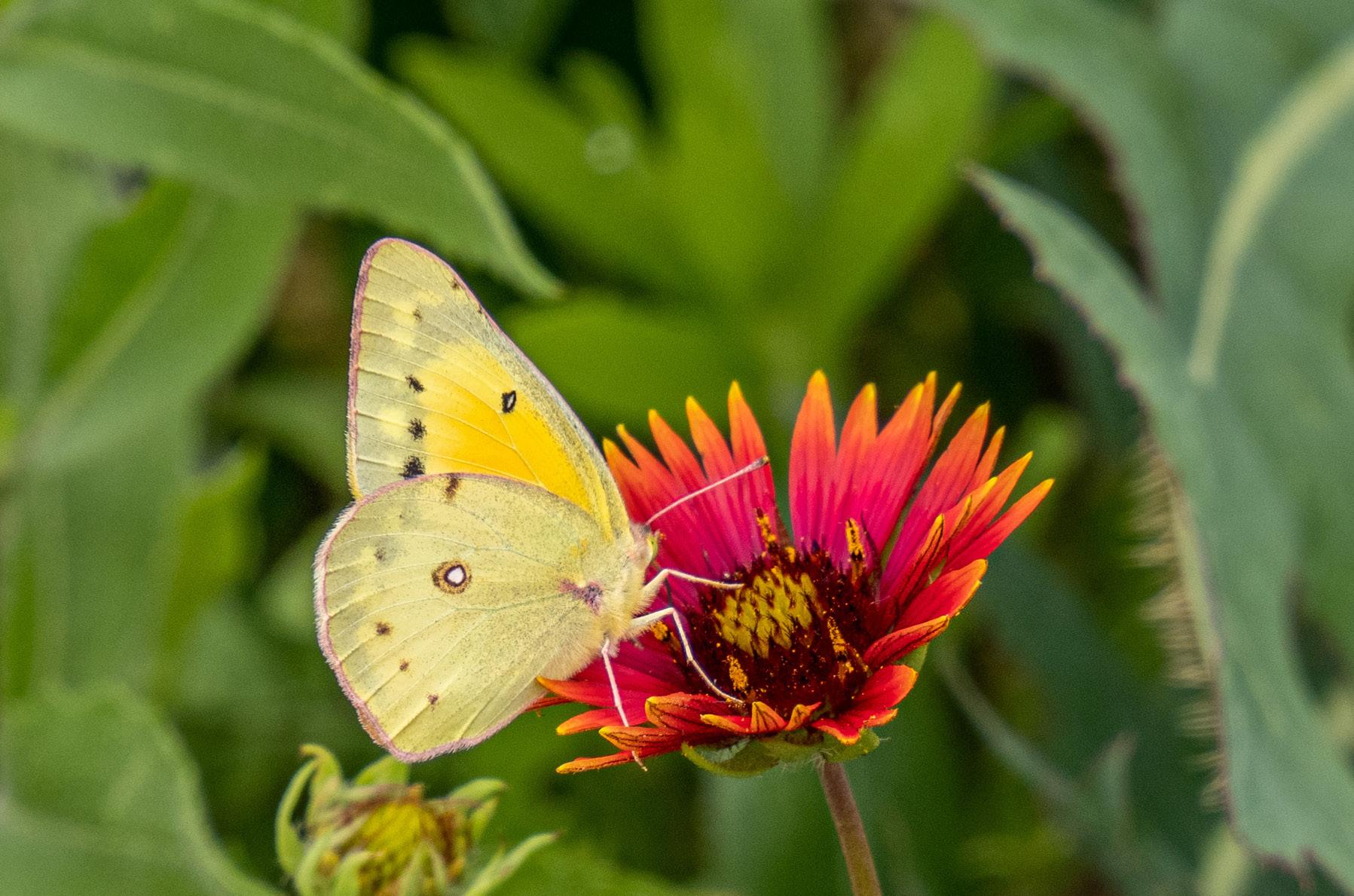

Beginning Photoshop course
4 online sessions: Finally learn how to be super creative with your images


HOLLAND & BELGIUM
April 24 to May 2, 2024

































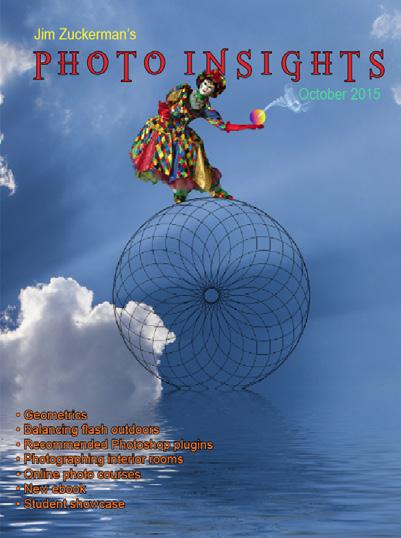






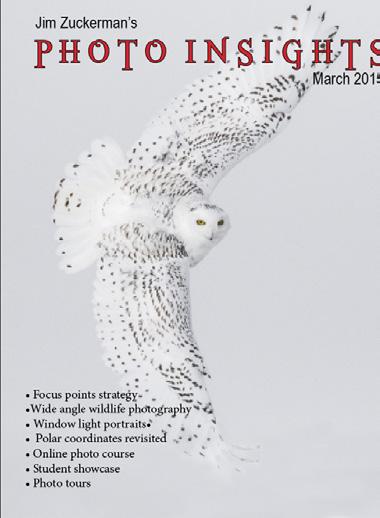

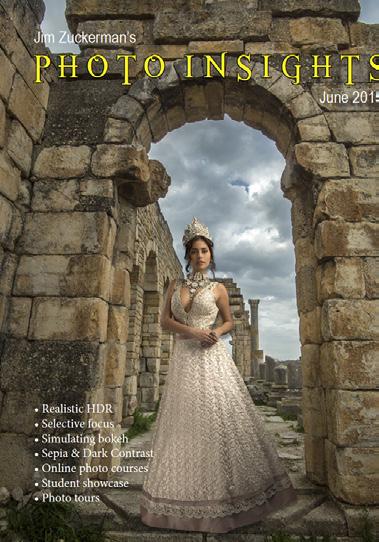
























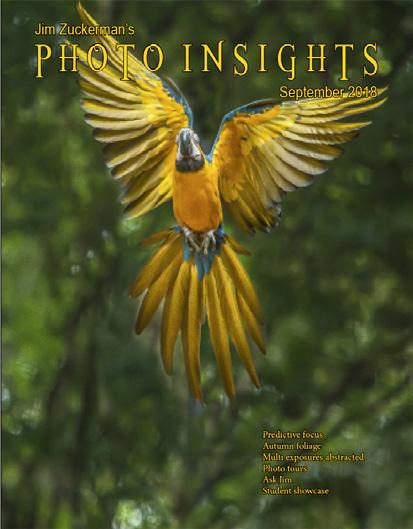



























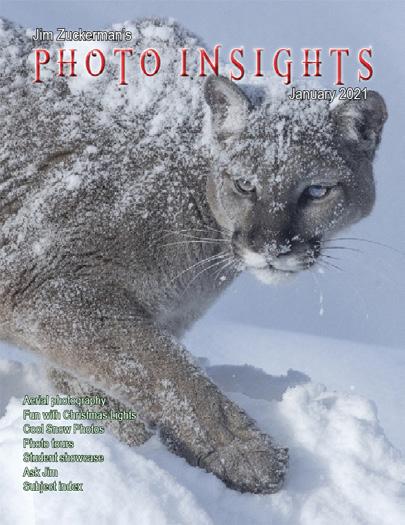













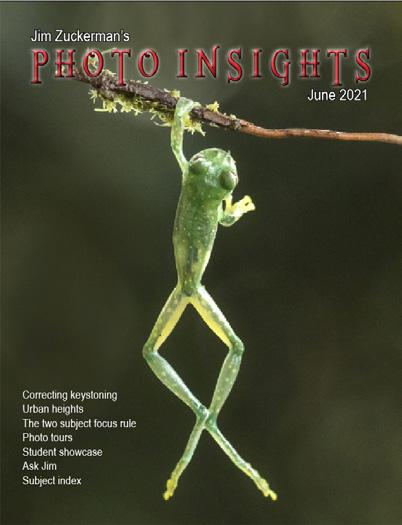















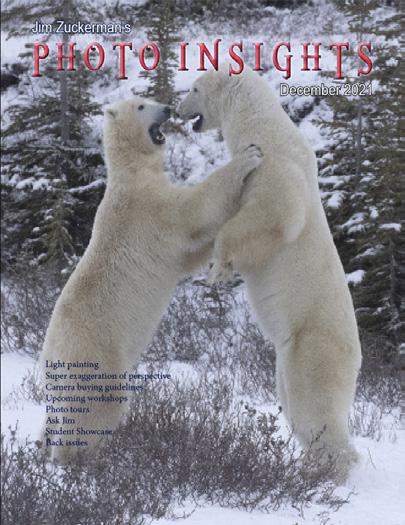










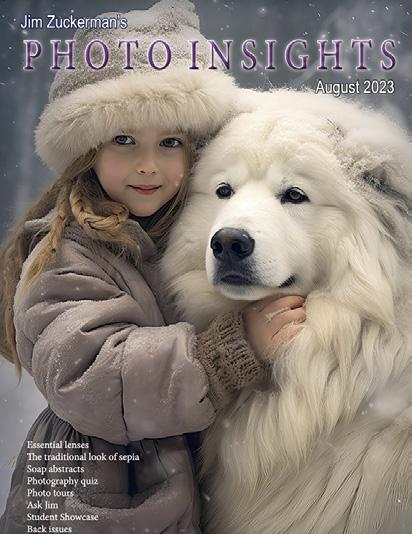
Subject index for past Photo Insight issues
1/3 focus law
3D sphere
90 degree finder
Abstracts in soap
Abstracts, Shooting
Aerial photography
Aerial photography
African safari
Airplane windows
Alien landscapes
Anatomy of 8 photographs
Angled perspectives
Aperture vs. shutter speed
Aperture priority
Auto white balance
Autofocus, when it fails
Autofocus failure
Autofocus failure
Autofocus challenges
Auto ISO
Auto White Balance
Autumn Color
Autumn foliage photography
Back button focus
Backgrounds, wild
Backgrounds, busy
Backlighting
Backlighting
Birds in flight
Birds in flight
Birefringence
Birds in flight
Birds in flight, camera settings
Bird Photography
Black backgrounds
Blacklight photography
Black velvet
‘15
‘19
‘13
‘21
‘16
Cityscapes May ‘16
Clone tool, fixing an issue Sep. ‘17
Clone tool technique
Composites and Light
Compositing images
Compositing, 7 steps
Jul. ‘20
Dec. ‘17
Apr. ‘19
Jan. 22
Composition, different approach Jan. ‘15
Content-aware, New Aug. ‘20
Content aware move tool
Contrast vs. exposure
Jan. ‘23
Jul. ‘15
Converting to black and white Mar. ‘22
Correcting keystoning
Creating a star field
Creating Art out of Motion
Creating a Sketch
Creative blurs
Custom functions
Dark backgrounds
Jun. ‘21
Jan. ‘14
May ‘22
Dec. ‘17
Jan. ‘14
Jul. ‘23t
Nov. ‘19
Dawn photography Jan. ‘17
Dawn photography Feb. ‘17
Dead center Jan. ‘13
Dealing with smog Oct. ‘16
Decay photography Sep. ‘15
Define Pattern Sep. ‘18
Depth of field Aug. ‘16
Depth of field confusion Jan. ‘20
Depth of field and distance Dec. ‘18
Depth of field and obliqueness May ‘21
Depth of field, shallow Apr. ‘20
Depth of field vs. sharpness Nov. ‘20
Double takes Apr. ‘20
Drone photography Mar. ‘23
Drop shadows Apr. ‘19
Dust, Minimizing Aug. ‘19
eBook, how to make Jan. ‘13
Elevated vantage points Aug. ‘23
‘21
Mar. ‘14
Black and white conversions Mar. ‘17
Black and white solarization
Sep. ‘17
Black and white with color Jan. ‘20
Black and white plus color Mar. ‘23
Blown highlights
Blue monochromes
Feb. ‘18
Jan. ‘22
Black Plexy Aug. ‘22
Blur, field
Blur technique
Bokeh
Nov. ‘18
Oct. ‘17
Jun. ‘15
Botanical gardens, shooting Apr. ‘22
Butterfly photography
Jul. ‘14
Camera buying guidelines Dec. 21
Camera settings for landscapes Feb. ‘23
Camera setting priorities Jun. ‘17
Canon R5 Mar. ‘21
Capturing lightning
Jun. ‘13
Capturing what you don’t see May ‘21
Catchlights
Jul. ‘16
Changing perspective May ‘21
Cheap flash stand Apr. ‘13
Children photography Jun. ‘14
Choosing a telephoto lens Dec. ‘20
Chromatic aberration May ‘13
Chrome Dec. ‘18
Cityscapes Aug. ‘14
Eliminating people from photos Jun. ‘22
Embedded in Ice
Oct. 17
Energy saving bulbs Sep. ‘14
Equidistance and telephoto lenses Apri. ‘23
Exploring the power visuals of AI Mar. ‘23
Exposing for the sun
Sep. ‘16
Exposure, the sun Jul. ‘13
Exposure technique Sep. ‘13
Exposure, snow Jan. ‘14
Exposure triangle Nov. ‘14
Exposure, to the right Apr. ‘15
Exposure compensation Sep. ‘16
Exposure compensation Mar. ‘21
Extension tubes
Extension tubes
Dec. ‘13
Jul. ‘23
Face sculpting Apr. ‘21
Face sculpting Feb. ‘22
Festival photography Sep. ‘20
Fill flash Sep. ‘13
Filter forge Feb. ‘13
Fireworks Jul. ‘13
Fireworks, Compositing Jun ‘20
Fisheye lenses May ‘13
Fisheye lenses Feb. ‘15
Fisheye fantasies Oct. 21
Flash backlighting May ‘15
Flash, balancing exposure Oct. ‘15
Flash, balancing off-camera Dec. ‘18
Subject index for past Photo Insight issues
Interiors Oct. ‘15
iPad: Loading photos
Aug.‘17
iPhone photography, pros and cons Apr. ‘22
Jungle photography Dec. ‘14
Kaleidoscopic images
Kaleidoscopis images
Jan. ‘15
Aug. ‘20
Keystoning, correcting Aug. ‘15
L Bracket
L Bracket
Landscape photography
Landscape photography
Landscape photography
Feb. ‘18
Feb. ‘21
Dec. ‘12
Apr. ‘14
Nov. ‘16
Layer Masks, The Power of Feb. ‘22
Light fall-off
Light painting
Lighting a face
Lightning photography
Liquify
Liquify Distortions
Lenses, Essential
Long lens portraits
Feb. ‘14
Dec. ‘21
Oct. ‘13
May ‘20
Feb. ‘18
Sept/Oct. ‘19
Aug. ‘23
Oct. ‘18
Long Lenses for Flowers Jul. ‘20
Low light photography
Luminar 4
May ‘15
Jan. ‘20
Macro flash Nov. ‘12
Macro flash
Macro flash
Macro flash
Macro photography and DOF
Macro trick
Managing soft focus
Mannequin heads
Metering modes
Meters, How They Work
Meters, when they fail
Sep. ‘14
Aug. ‘15
Aug. ‘22
Feb. ‘22
May ‘19
Jul. ‘21
Apr. ‘16
Nov. ‘16
Jul. ‘18
Dec. ‘16
Metering situations, Impossible Jul. ‘19
‘16 HDR, hand held
‘17 HDR, hand held
‘18 HDR panoramas
‘16 HDR, choosing the number of frames
wind
Highlights, overexposed
Histograms, Why I Don’t Use
Histogram problems
Home nature projects
Hotels with a view
Humidity
Hummingbird photography
Hyperfocal distance
Image resizing
Implying motion
Impossible DOF
Impossible DOF
Indestructible camera bag
Infrared photography
Insane ISO settings
‘20
‘13
‘13
‘13
‘18
‘16
‘17
‘14
‘14
‘22
Middle gray
Milky Way, Shooting thet
Minimizing dust on the sensor
Mirrors
Mirror images
Model shoot
Moon glow
Mosaics
Mundane to Ideal
Museum photography
Nov. ‘15
Nov. ‘21
Jan. ‘19
May ‘23
Jan. ‘17
Oct. ‘16
Jun. ‘17
Nov. ‘19
Mar. ‘13
Natural Light Portraits Aug. ‘21
Negative space
Jan. ‘16
Neon edges on black Aug. ‘14
Neutral Density filters
Jun. ‘18
Neutral Density filters and water Mar. ‘22
Night photography
Night Safaris
Feb. ‘14
Jun. ‘18
Night to Twilight Dec. ‘17
Noise reduction
Oil and water
Optical infinity
Feb. ‘17
May ‘20
Jun. ‘16
Organization of photos Mar. ‘18
Out of focus foregrounds
Jan. ‘20
Subject index for past Photo Insight issues
Paint abstracts May ‘13
Paint abstracts
Aug. ‘21
Painting with light Sep. ‘15
Panning motion Dec. ‘16
Pano-Mirrors with a twist Jan. ‘18
Parades Sep. ‘13
Parallelism Nov. ‘19
Parallelism and DOF Feb. ‘21
Perspective, Super Exaggeration of Dec. ‘21
Photo shsaring Apr. ‘23
Photo terms Nov. ‘22
Photography to Art Dec. ‘17
Photography solutions Jan. ‘18
Photoshop, content Aware Nov. ‘12
Photoshop, sketch technique Apr. ‘13
Photoshop, replace background Apr. ‘13
Photoshop, actions palette Dec. ‘13
Photoshop, layer masks Feb. ‘13
Photoshop, the clone tool May ‘13
Photoshop, soft foliage Oct. ‘13
Photoshop, mixer brush tool Sept. ‘14
Photoshop, b & w with color Jun. ‘14
Photoshop, drop shadows Jul. ‘14
Photoshop, creating texture Feb. ‘14
Photoshop, face mirrors Feb. ‘14
Photoshop, liquify Mar. ‘14
Photoshop, face mirrors Aug. ‘14
Photoshop, digital spotlight Sep. ‘14
Photoshop, enlarge eyes Nov. ‘14
Photoshop, darken the periphery Dec. ‘14
Photoshop, mirror images Dec. ‘14
Photoshop, beam of light Apr. ‘15
Photoshop, polar coordinates Mar. ‘15
Photoshop, chrome May ‘15
Photoshop, actions palette Nov. ‘15
Photoshop, cut and paste Nov. ‘15
Photoshop, geometrics Oct. ‘15
Photoshop, plugins Oct. ‘15
Photoshop, multiple selections Apr. ‘16
Photoshop, sharpening Apr. ‘16
Photoshop, Flood plugin Apr. ‘16
Photoshop, Desaturation Aug. ‘16
Photoshop, making a composite Aug. ‘16
Photoshop new tool May ‘20
Photoshop, place one element behind Aug. ‘18
Photoshop, the pen tool Feb. ‘16
Photoshop, canvas size Jan. ‘16
Photoshop, using the earth Jun. ‘16
Photoshop, define patterns May ‘16
Photoshop, paste into Nov. ‘16
Photoshop, b & w with color Feb. ‘17
Photoshop, open a closed door Apr. ‘17
Photoshop, palettes May ‘17
Photoshop, My favorite plugins Jan. ‘20
Portrait options Jan. ‘19
Portrait techniques Nov. ‘15
Portraits Mar. ‘13
Portraits, mixed lighting Aug. ‘14
Portrait Professional Nov. ‘19
Portraits, Lens choice Sept/Oct. ‘19
Portraits, side lighting Sep. ‘17
Portraits, window light Mar. ‘15
Portraits, outdoors May ‘17
Post-processing checklist Dec. ‘13
Post-processing: Contrast Aug. ’17
Practicing graphic design, Part I Dec. ‘22
Practicing graphic design, Park II Jan. ‘23
Practicing graphic design, Part III Feb. ‘23
Pre-capturing technology May ‘23
Predictive Focus
Problem/solution
Sep. ‘18
Apr. ‘17
Problem Solving in Photoshop May ‘22
Problem with cruises Jan. ‘18
Protecting extremeities from the cold Dec. ‘22
Protecting highlights Dec. ‘12
Puppies Jan. ‘15
Puppy photography
Feb. ’18
Reflections Feb. ‘13
Reshaping faces
Oct. ‘22
Restoring old photos Jun ‘20
Ring flash, advantages Jul. ‘21
Ring flash versatility Oct. ‘21
Rule of Odds May ‘22
Safari May ‘13
Safari strategies Jul. ‘15
Seeing as the lens does Nov. ‘14
Seeking Cool Snow Photos Jan. ‘21
Selective filtering
Selective focus
Mar. ‘18
Jun. ‘15
Self-critiques Jul. ‘13
Self-critiques
Self-critiques
Oct. ‘13
Nov. ‘20
Sensor cleaning Jun. ‘18
Sepia and dark contrast Jun. ‘15
Sepia, Traditional look of Shade
Shady side
May ‘14
Jun. ‘18
Shadows, Paying Attention to Mar. ‘18
Sharpness problems
Mar. ‘14
Shooting in Inclement Weather Nov. ‘22
Shooting through textured glass May ‘23
Shooting through wire mesh Sept. ‘14
Shooting into the light Jun ‘20
Silhouettes
Jun. ‘13
Silhouettes, How to make Apr. ‘22
Silhouettes, Exposing for Sept/Oct. ‘19
Silvered landscapes Mar. ‘20
Sketch, How to Make
Skies make or break a picture
Sky replacement
Jun ‘19
Aug. ‘21
Nov. ‘20
Sky replacement strategies Aug. ‘22
Snow exposure
Snow exposure
Nov ‘17
Nov. ‘19
Soap abstracts Aug. ‘23
Soft light
Jan. ‘13
Smart phone photography May ‘19
Stained glass Mar. ‘17
Star photography
Jul. ‘16
Star photography and noise Jan. ‘18
Stock photography Sep. ‘14
Sunrise & sunset Jan. ‘19
Subject index for past Photo Insight issues
Tamron 150-600mm Apr. ‘14
Ten reasons photos are not sharp Jan. ‘19
Texture, Adding Mar ‘19
Texture Mapping in 3D Jul. ‘21
Topaz AI Gigapixel Mar ‘19
Topaz glow Jan. ‘15
Topaz glow Sep. ‘17
Topaz Impression Sep. ‘15
Topaz Remask 5 Oct. ‘17
Topaz Simplify 4 Dec. ‘12
Topaz simplify 4 Jun. ‘14
Topaz Studio Apr. ‘18
Translucency & backlighting Nov. ‘18
Travel photography Feb. ‘13
Travel portraits Mar. ‘14
Travel tips Apr. ‘14
Travel photographer’s guide Jun. ‘17
Tweaking exposure on the fly Apr. ‘23
Twilight photography in the rain Apr. ‘19
Tripods Mar. ‘18
Two subject sharp rule May ‘14
Two subject focus rule Jan. ‘20
Two subject focus rule Jun. ‘21
Urban heights Jun. ‘21
Ultra distortion May ‘18
Unusual Panos Nov. ‘22w
Upside Down Reflections Aug. ‘21
Quiz answers
Warm fingers in winter Nov. ‘15
Water drop collisions May ‘18
What NOT to do in photography Apr. ‘18
When You Needed a Zoom Aug. ‘21
White on White Dec. ‘20
White vignette Aug. ‘15
White balance Feb. ‘15
White balance, custom Mar. ‘16
White balance, What
Wide angle conundrum
Wide angle lenses
Wide angle portraits
Wide angle lenses
Wide angle lenses: Outside the Box
Wide angle keystoning
Wildlife photos with wide angles
Window light
Window light portraits
Window frames
Winter photography
Winter bones
Winter photography
Winter photography
‘23
‘19
‘13
‘14
‘17
‘22w
‘17
‘15
‘15
‘18
‘16
‘12
‘13
‘15
‘18
Wire Mesh, Shooting Through Jul. ‘18
Workflow May ‘13
Your score
90% - 100%: You could have been a pro
80% - 89%: Your glasses probably need a new prescription
70% - 79%: Don’t quit your day job
< 70%: You should really be using an iPhone
PHOTO INSIGHTS®
published by Jim Zuckerman
All rights reserved
© Jim Zuckerman 2023
email: photos@jimzuckerman.com
Edited by: Donald MooreThis page: The most amazing of all costumes in Venice, Italy, during carnival..

